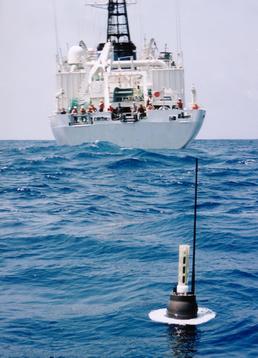If there is a canary in the coal mine of climate science, the temperature of the ocean is our best early warning system that something is amiss. As the atmosphere warms and intermixes with the ocean surface some of that heat is transferred to the water. That high heat capacity makes the ocean an ideal heat sink. And we have been recording ocean temperatures for more than a century. From 1872 to 1876, the voyage of H.M.S. Challenger recorded subsurface water temperatures in the oceans around the world as part of much more comprehensive research project. When we compare these temperatures with the modern data collected by the Argo Programme from 2004 to 2010 we can see an average warming of surface water of 0.59 Celsius (about 1 Fahrenheit). When we look at the average subsurface temperature taken at 366 meters (200 fathoms) that increase is 0.39 Celsius, and at 914 meters (500 fathoms) 0.07 Celsius. Data shows that the Pacific has not warmed up as fast as the Atlantic.

On its voyage H.M.S. Challenger’s did 300 temperature soundings from the ocean surface to the deep ocean. Argo provides global coverage today with 3,500 floating sensor arrays takes the temperature, salinity and other measures every 10 days and transmits this data to give scientists an instant picture of the ocean.
From the data collected we know the ocean has been warming and not just in the last 50 to 60 years but for far longer. What we don’t know is how much more the ocean can absorb in increased heat before it starts impacting ocean life, or if the rate of ocean heating will accelerate as the atmosphere continues to warm.









